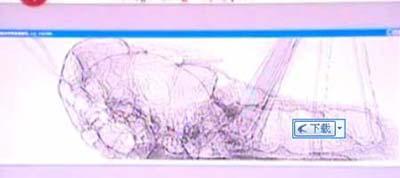Source: Xinhua
03-16-2009 13:53
Special Report: Tech Max
 |
| TV grab shows a hard X-ray photo of a live locust taken with the synchrotron radiation light source in Shanghai on March 14, 2009. Even minute vessels in locust antennae can be oberserved and respiratory organs seen clearly, which otherwise cann't be achieved with a traditional X-ray machine. Shanghai Synchrotron Radiation Facility, SSRF, is a third-generation of synchrotron radiation light source. Up to now, SSRF is the biggest scientific platform for science research and technology development in China. The synchrotron radiation was firstly observed in synchrotron accelerator in 1947. When a circulating electron beam is deflected by the bending magnets in a storage ring, an intense flux of electromagnetic radiation, called synchrotron radiation, is produced. (Xinhuanet Photo) |
